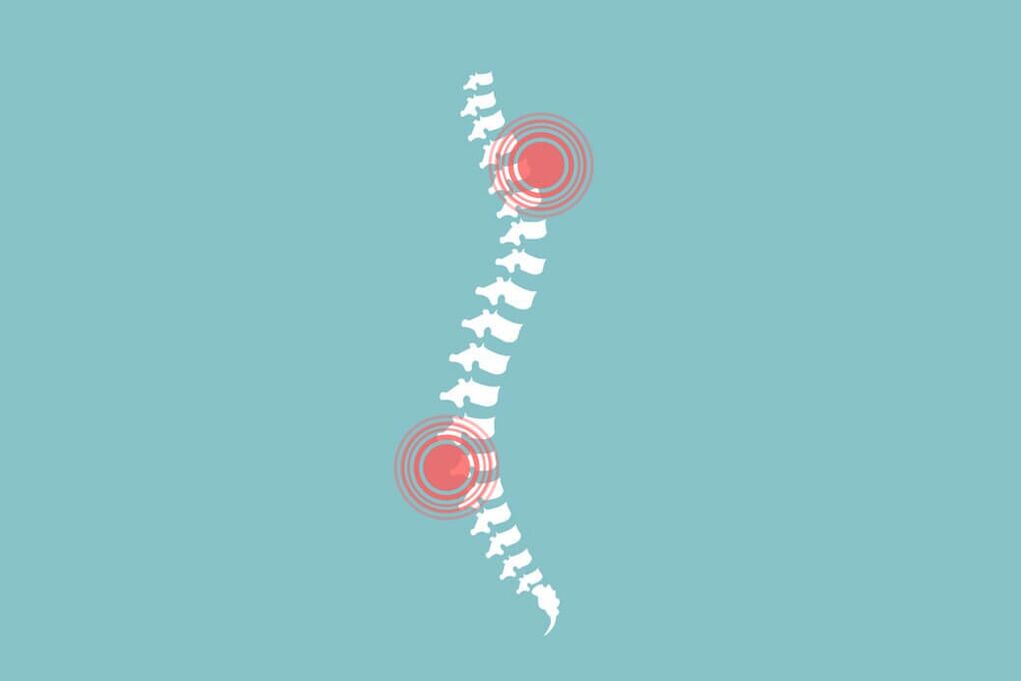Back pain, back pain is the scourge of our time. A sedentary lifestyle, sedentary work, high-calorie nutrition and, as a result, excess weight contribute to the development of diseases of the spine. What are we struggling with the most? And where do we go for help when our back hurts?

Why does your back hurt?
We speak of back pain when one feels it along the vertical axis of the body, next to the spine. It is estimated that up to 80% of people worldwide experience back pain. It appears in different parts of the spine: from the cervical, thoracic and lumbar to the sacrum. However, patients more frequently complain of pain in the cervical and lumbar regions.
The spine makes itself felt as a result of mechanical injuries. But often the cause can be degenerative changes, inflammation or diseases that affect the mobility and condition of the joints.
Other factors that indirectly affect the health of our spine are also important. As we age, the spine becomes more vulnerable to injury. It is also affected by poor physical condition and lack of exercise.
This is especially true for those who lead a sedentary lifestyle and work a lot in front of the computer.
Workers who perform strenuous physical work are more susceptible to back injuries and pain due to overexertion.
Obesity can also cause back pain, as well as chronic stress and depression.
Back pain: the most common causes
- Discopathy- We talk about this when we are dealing with the so-called herniated disc. It is accompanied by irritation or even damage to the nerve root. It occurs most often in the lumbar spine. This is manifested by back pain that goes to the legs, causing you to lean forward and arch your spine. It most often affects young people between the ages of 25 and 40.
- Lumbago- also known as lumbago. Sharp, stabbing pain affecting the lumbosacral (lower back) region. This is one of the main reasons to visit a doctor's office. The cause is almost always a mechanical injury as a result of an overexertion of the spine. Pain increases when bending over and lifting objects. Sometimes it goes away after a few days, but it can last for several weeks.
- Sciatica- in this case, the pain occurs when a fragment of the intervertebral disc is squeezed on the nerve roots. Pressure on the sciatic nerve or its roots causes severe pain that spreads to the buttock and leg. Sciatica is an inflammation of the sciatic nerve as a result of the development of a degenerative disease of the spine.
- Osteoporosis- a disease that affects the elderly, especially postmenopausal women. This manifests itself in a progressive loss of bone density and a weakening of the bone structure, which makes them more prone to fracture. It is a condition that causes decreased bone growth, thoracic kyphosis, and severe back pain. This disease can also lead to the so-called compression fracture of the vertebrae, even with minimal impact.
Who should you contact for help?
If we feel back pain, we should go immediately to a therapist. The doctor may conduct preliminary examinations and prescribe an X-ray, CT scan, or MRI at his discretion. If deemed necessary, we will receive a referral to an orthopedist, a specialist in the diagnosis and treatment of the skeletal system.
In case of problems with the spine and the entire skeletal system, it is also worth consulting a physiotherapist. He will take care of our correct posture and present a series of exercises that will strengthen our spine.
How to control the spine?
In the case of our spine condition, there is an old and simple rule: prevention is better than cure. Just follow a few simple rules during the day to enjoy life without back pain:
- Regular exerciseOn the one hand, let's do exercises that allow you to maintain an adequate body weight and stay in shape. On the other hand, let's do exercises that strengthen the paraspinal muscles. We must also remember about stretching. It will improve muscle flexibility and prevent cramps and stiffness. It will also improve the blood supply to the muscles and tissues.
- Correct posture.You need to control your posture both when walking and in sitting and lying positions. Try not to hunch or bend your spine unnaturally, such as when sitting.
- The right mattress.The way we sleep has a significant impact on the health of our spine. The mattress should be neither too soft nor too hard. It is best to consult a qualified dealer when choosing a mattress. You will select it according to your needs.
- A healthy and balanced diet.It must be rich in essential vitamins and minerals. In addition, they contain proteins, fats and carbohydrates in the correct proportions.





































